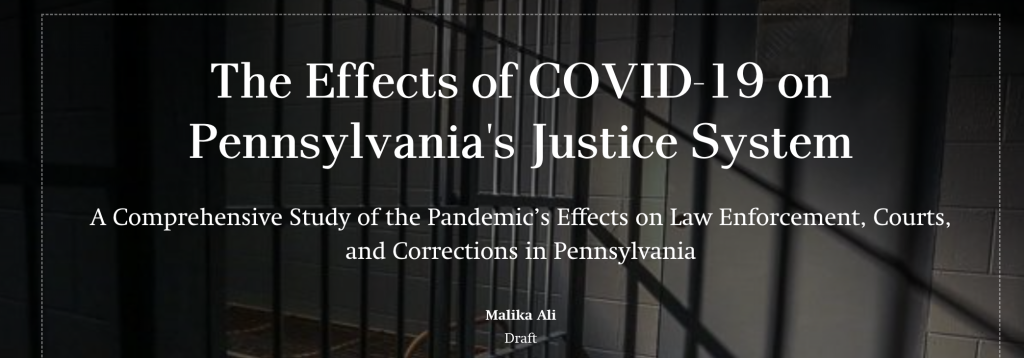Over the past few weeks, I’ve received valuable feedback on my research project. One such piece of feedback was related to the need to delve deeper into the impact of social movements, specifically Black Lives Matter, on Pennsylvania’s criminal justice system. I realized early in my project that I wanted to include this to provide context for the topic, but in a way where my language wasn’t performative. I’m glad I received this feedback and am able to take a second look at my language, approaches, and methods.
Another key takeaway was the importance of taking a topical approach during my presentation. Although we were talking about presentations, I realized that I wanted to incorporate this into my site as well. By focusing on concise descriptions of the causes and effects related to each component of the justice system (law enforcement, courts, and corrections), I want to provide clear insights into how COVID-19 has shaped these areas. This approach not only helps maintain clarity but also ensures that I stay on track without going into unnecessary tangents.
I was also told that the conclusions I draw from my data should be a bit more focused. I am working to reword my findings into concise and impactful takeaways, emphasizing the specific effects of the pandemic rather than broad aspects of the justice system as a whole.
Regarding the timeline of my project, I’ll be changing it to better reflect the interconnectedness of events related to COVID-19 and its effects on the justice system. This means ensuring that each event included contributes directly to the narrative of how the pandemic has influenced law enforcement practices, court proceedings, and correctional facilities in Pennsylvania (or at least providing more information to show how).
I’m excited to incorporate these insights into my research and I look forward to sharing a more focused and insightful project. Stay tuned for the final project!
Note: One thing I’m still really trying to figure out is the actual title of my project (yes I’m aware that this is week 7) but this is what I’m thinking right now….
